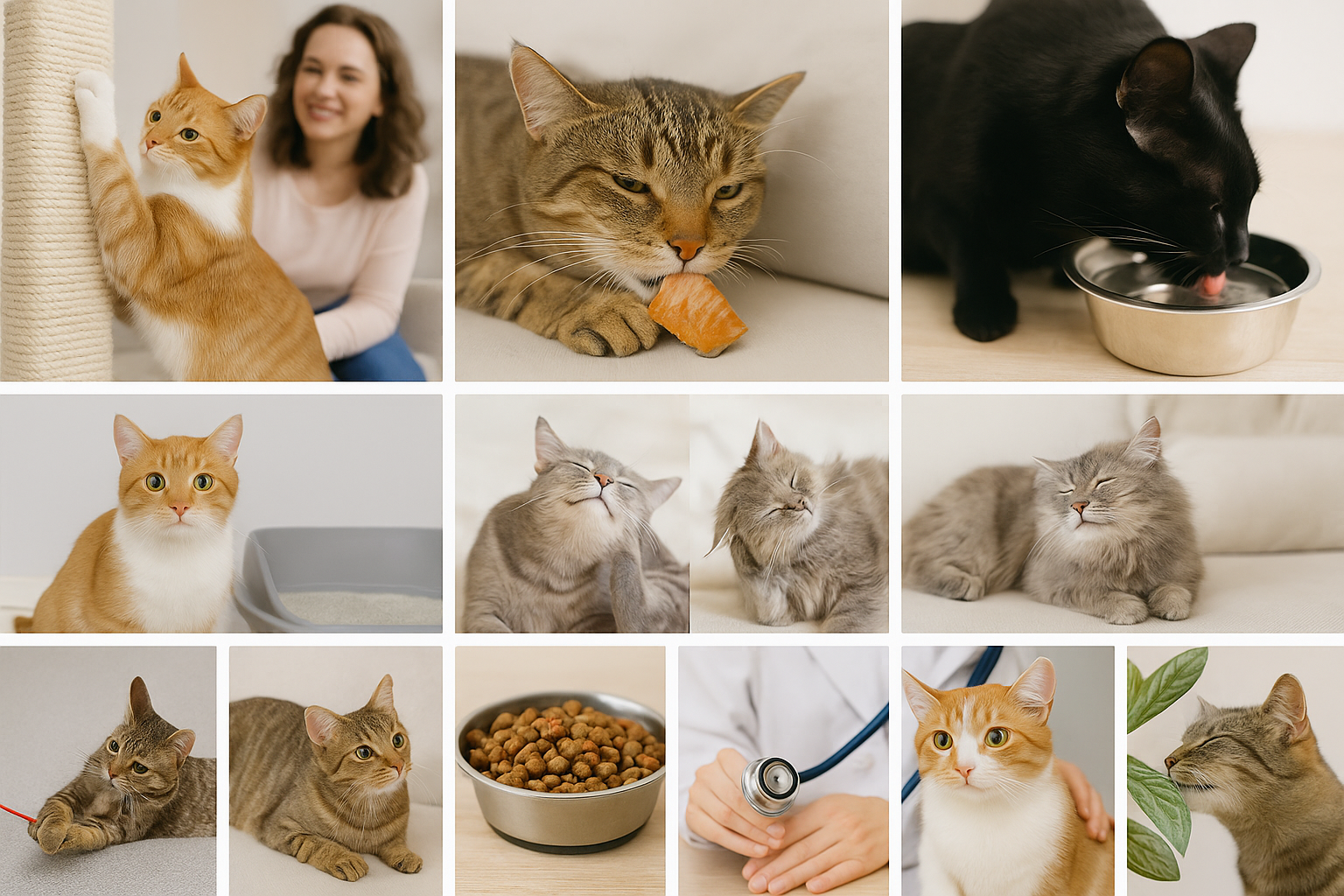
The Complete Guide to Cat Care: Training, Nutrition, and Allergies
Introduction
Cats are mysterious, independent, and incredibly lovable companions. But caring for them properly requires understanding their behavior, training needs, and nutrition. Unlike dogs, cats have unique instincts that affect how they respond to training, food, and their environment.
In this guide, we’ll cover everything you need to know about raising a healthy, happy cat — from training basics to choosing the right food and spotting common allergies.
Part 1: How to Train Your Cat
Many people believe cats can’t be trained, but the truth is, cats respond well to positive reinforcement.
1. Litter Box Training
- Place the litter box in a quiet, accessible location.
- Keep it clean — cats may refuse to use dirty boxes.
- Reward your cat with gentle praise or treats after use.
2. Scratch Training
Cats scratch to sharpen claws and mark territory. Instead of punishing, redirect:
- Provide scratching posts or pads.
- Use catnip or toys to attract them to the post.
3. Behavioral Training
- Use clicker training for commands like “sit” or “come.”
- Never punish — instead, ignore unwanted behavior and reward good actions.
Part 2: Best Foods for Cats
Cats are obligate carnivores, meaning their diet must be based on animal protein.
Healthy Foods for Cats
- Lean meats: chicken, turkey, beef (cooked, no seasoning).
- Fish: salmon, sardines (in moderation, not daily).
- Eggs: cooked, as a protein boost.
- Commercial high-quality cat food: with real meat as the first ingredient.
Foods Cats Should Avoid
- Onions and garlic (toxic to red blood cells).
- Chocolate and caffeine (toxic to heart and nervous system).
- Grapes and raisins (cause kidney damage).
- Raw fish (risk of parasites).
- Dairy (many cats are lactose intolerant).
Part 3: Common Cat Allergies
Cats can develop allergies just like humans.
1. Food Allergies
- Common triggers: chicken, beef, dairy, fish.
- Symptoms: vomiting, diarrhea, itchy skin.
2. Environmental Allergies
- Pollen, dust, mold.
- Symptoms: sneezing, watery eyes, coughing.
3. Flea Allergies
- Severe itchiness even with a single flea bite.
If you notice these symptoms, consult a vet and consider an elimination diet.
Part 4: Extra Tips for Cat Care
- Playtime matters: Cats need at least 20–30 minutes of interactive play daily.
- Routine vet visits: Annual checkups help prevent long-term issues.
- Hydration: Cats often drink less water — wet food can help increase hydration.
- Safe environment: Keep toxic plants (like lilies) away from your home.
The Role of Personalized Nutrition
Generic cat food can’t meet every feline’s unique needs. With AI-powered platforms like Fammo, you can design diets based on:
- Age (kitten, adult, senior)
- Weight and activity level
- Allergies and sensitivities
- Health conditions (kidney, heart, obesity)
This ensures your cat gets exactly the nutrition they need to thrive.
External Resources
FAQs
Q1: Can cats be trained like dogs?
Yes. With positive reinforcement, cats can learn commands and routines.
Q2: What human foods are safe for cats?
Cooked meat, fish (occasionally), and eggs — always without spices or seasoning.
Q3: How do I know if my cat has food allergies?
Watch for vomiting, diarrhea, and skin irritation. Try an elimination diet under vet supervision.
Q4: Do cats need wet food?
Not mandatory, but wet food supports hydration and urinary tract health.
Q5: How much should I feed my cat daily?
It depends on weight and activity, but most cats need 24–35 calories per pound daily.
Key Takeaways
📌 Cats can be trained with patience and positive reinforcement.
📌 A protein-rich diet is essential for cat health.
📌 Avoid toxic foods like onions, garlic, and chocolate.
📌 Common cat allergies include food, fleas, and environmental triggers.
📌 Personalized nutrition ensures your cat’s unique needs are met.
Summary
Your cat deserves more than generic care. From proper training to customized diets, you can give them a longer, healthier, and happier life. Join Fammo today and discover how AI-powered personalized nutrition transforms cat care.